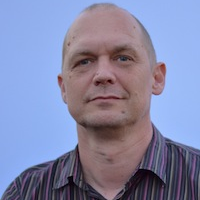Low-Cost Sensors for Water Quality Monitoring
A special issue of Sensors (ISSN 1424-8220). This special issue belongs to the section "Chemical Sensors".
Deadline for manuscript submissions: closed (30 June 2023) | Viewed by 5251
Special Issue Editor
Interests: surface science; 2D materials; surface analysis; interfacial doping; solid state sensors
Special Issues, Collections and Topics in MDPI journals
Special Issue Information
Dear Colleagues,
In recent decades, continuous pollution has changed the quality of most water sources, including fresh and marine waters. To effectively monitor water quality, a very large number of sensors need to be deployed, many more than is currently feasible. Only by developing reliable and low-cost water-quality sensors can we be successful in quantifying the magnitude of the problem and verifying the success of remedial actions.
Relevant parameters include turbidity, color, temperature, conductivity, hardness, pH, disinfectant concentration, nutrients, heavy metals and other ion concentrations, organic pollutants, and pathogen counts. Sensor technologies need to be developed that can form the basis of robust, low-power, low-cost devices for continuous monitoring. A variety of sensor technologies have been considered, including mass-analytic (cantilever, quartz crystal microbalance, mass spectrometry), optical (colorimetry/absorbance, chemiluminescence, fluorescence, phosphorescence, Raman, surface plasmon, atomic emission), and solid-state (electrochemical sensors, chemiresistive sensors, and field-effect devices) methods. Supporting infrastructure for sample conditioning, data transmission and analysis is also required.
For this Special Issue, we invite contributions from researchers from academia and industry sharing recent advances in materials, devices, and supporting infrastructure with applications in water quality monitoring, especially pertaining to lowering the cost of the fabrication, deployment, and maintenance of these sensors. Submissions of original research articles as well as critical reviews of recent progress are welcome.
Prof. Dr. Peter Kruse
Guest Editor
Manuscript Submission Information
Manuscripts should be submitted online at www.mdpi.com by registering and logging in to this website. Once you are registered, click here to go to the submission form. Manuscripts can be submitted until the deadline. All submissions that pass pre-check are peer-reviewed. Accepted papers will be published continuously in the journal (as soon as accepted) and will be listed together on the special issue website. Research articles, review articles as well as short communications are invited. For planned papers, a title and short abstract (about 100 words) can be sent to the Editorial Office for announcement on this website.
Submitted manuscripts should not have been published previously, nor be under consideration for publication elsewhere (except conference proceedings papers). All manuscripts are thoroughly refereed through a single-blind peer-review process. A guide for authors and other relevant information for submission of manuscripts is available on the Instructions for Authors page. Sensors is an international peer-reviewed open access semimonthly journal published by MDPI.
Please visit the Instructions for Authors page before submitting a manuscript. The Article Processing Charge (APC) for publication in this open access journal is 2600 CHF (Swiss Francs). Submitted papers should be well formatted and use good English. Authors may use MDPI's English editing service prior to publication or during author revisions.
Keywords
- sensor geometries and materials
- rapid prototyping and sensor fabrication methods
- mechanical, optical, electrochemical, and electrical sensors
- spectrometric and spectroscopic methods
- sample pre-treatment, filtration, preconcentration, etc.
- stand-alone sensors and sensor networks
- online sensors
- off-line analytical methods for water quality determination
- low-cost sensors and solutions for crowdsourcing and citizen science
- redox and disinfectant sensors
- aqueous ion sensors
- pH, temperature, conductivity, hardness, turbidity, and color sensors
- nutrient sensors
- organic pollutant sensors
- pathogen sensors






